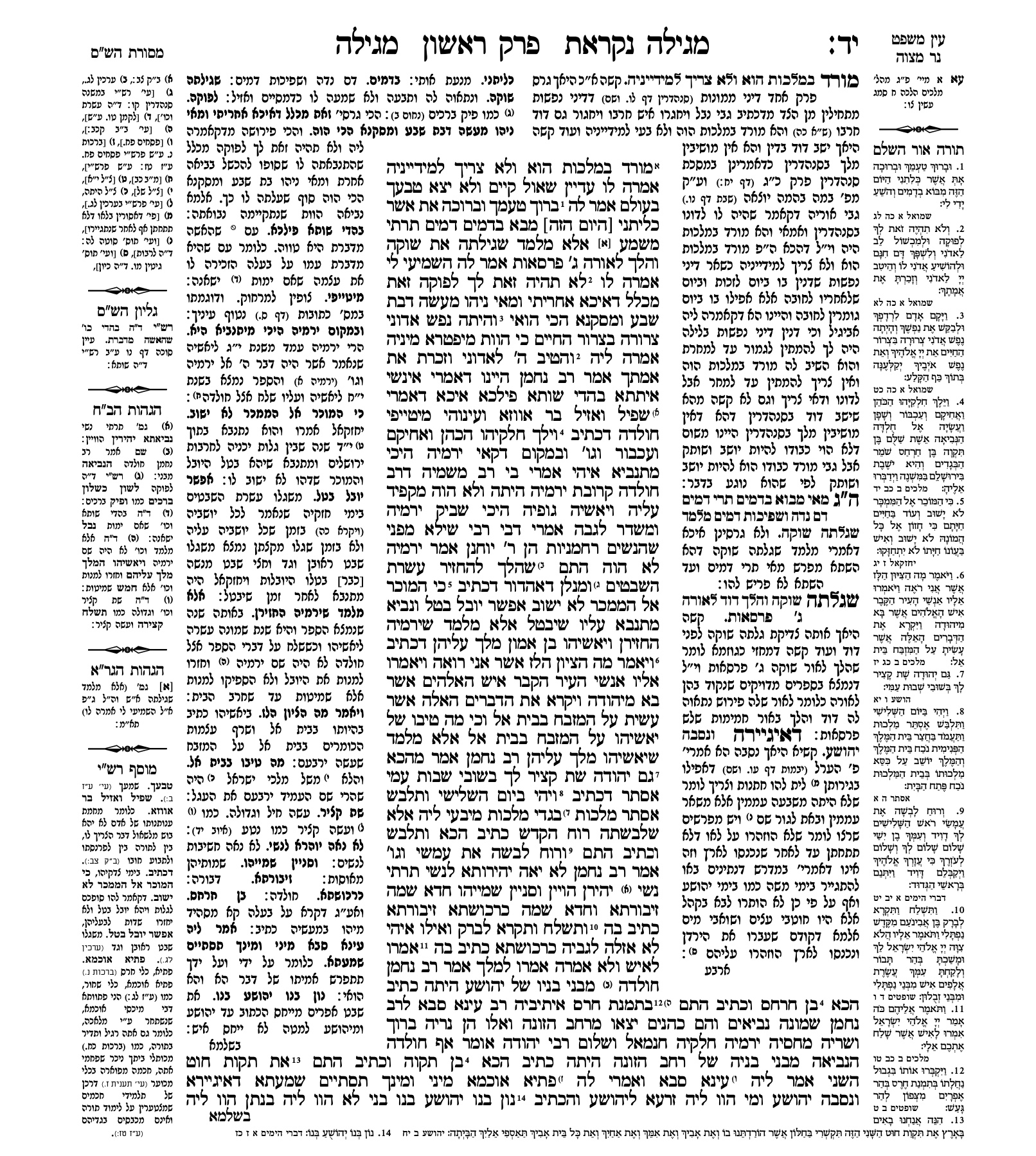Ready to get started?
Today’s Daf – Zevachim 115 / Jan. 7th, 2026 / י״ח בטבת תשפ״ו
Ready to get started?
🎉 Join the 2026/5786 #MegillahChallenge! 🎉
Register to join our Siyum Masechet Zevachim Sunday January 11
The Symbols and References Inside the Talmud Page
This commentary gathers the full verses from the Tanakh that are referenced in the Gemara. Torah Or includes the complete verse along with an exact citation. This tool is especially helpful fas sometimes the Gemara will only quote the first few words of a verse while the part most directly relevant to the argument is actually towards the end of the verse. Someone who wants to fully understand the prooftext can use Torah Or in order to fully appreciate the textual argument.
In the image below, Torah Or references are marked by small numbers (1, 2, 3…) within the text of the Gemara and are located in the right margin. For example, on the third line of the page, before the word “Baruch”, you’ll see a small number 1. In the Torah Or section on the side of the page, next to the number 1, you’ll find the full verse from the Book of Shmuel.

This commentary contains mostly parallel Talmudic sources, along with a few textual corrections and variant readings. The abbreviation צ”ל (tzarich lomar – “it should read”) indicates a correction, not a source. Some tractates are abbreviated (e.g., Bava Kama appears as ב״ק).
In the image, Masoret HaShas references are marked with a small script letter followed by a parenthesis, and are located in the upper left margin. For instance, in line 14 before the word “shefil“, you’ll see a small א). In the commentary section, this refers to a parallel discussion in Bava Kama 92. Another example is the letter י), which offers a correction: “צ”ל של” (“it should read ‘shel’“).
This commentary provides halachic rulings that emerge from the Talmudic discussions. It includes references to rulings of the Rambam (Mishneh Torah), Sefer Mitzvot Gadol (Semag), Tur, and Shulchan Aruch.
- Rambam is referenced with the abbreviation מיי׳ (short for Maimonides). It is followed by פ׳ (short for perek – chapter), the chapter number, the section title, and the specific halacha.
- Semag references are marked סמ״ג, followed by whether it’s a positive or negative commandment and the mitzvah number.
- Tur and Shulchan Aruch references are abbreviated טוש״ע, followed by the section (e.g., או״ח for Orach Chaim, יו״ד for Yoreh De’ah, etc.), siman (chapter), and se’if (clause).
In the image, an Ein Mishpat Ner Mitzvah symbol appears before the first word of the Gemara text, marked as a small printed letter א. The commentary itself is in the upper right margin.
This is a collection of sharp questions, comments, and source comparisons by Rabbi Akiva Eiger. Most notes are analytical challenges or cross-references not already found in Masoret HaShas.
In the image below, these notes are marked by a small circle with a horizontal line through it (Ө). For example, on the tenth line of Rashi’s commentary, before the word “sheha’isha“, you’ll find this symbol. Gilyon HaShas appears in the left margin under Masoret HaShas.
Over centuries, errors crept into printed editions of the Talmud. These glosses by later rabbis aim to restore the original text based on manuscripts and comparative sources.
- Hagahot HaBach were written by Rabbi Yoel Sirkis (17th century) and address both the Talmud and Rashi. In the image (as in most editions), Bach’s notes are marked by a small script letter inside round parentheses, e.g., (ג). The notes are found in the lower left margin, below Gilyon HaShas.
- Hagahot HaGra are emendations by the Vilna Gaon (18th century), marked in the text by a printed letter inside square brackets, e.g., [ד]. The notes appear at the bottom left corner beneath the Bach’s notes.
The three foundational commentaries Torah Or, Masoret HaShas, and Ein Mishpat Ner Mitzvah were all written by Rabbi Yehoshua Boaz in the 16th century.
This post is part of Hadran’s educational series, helping you navigate and understand Talmudic concepts. Click here for more explorations into the world of Talmud.
For “The Complete Beginner’s Guide to Gemara” highly recommended course series, click here.

